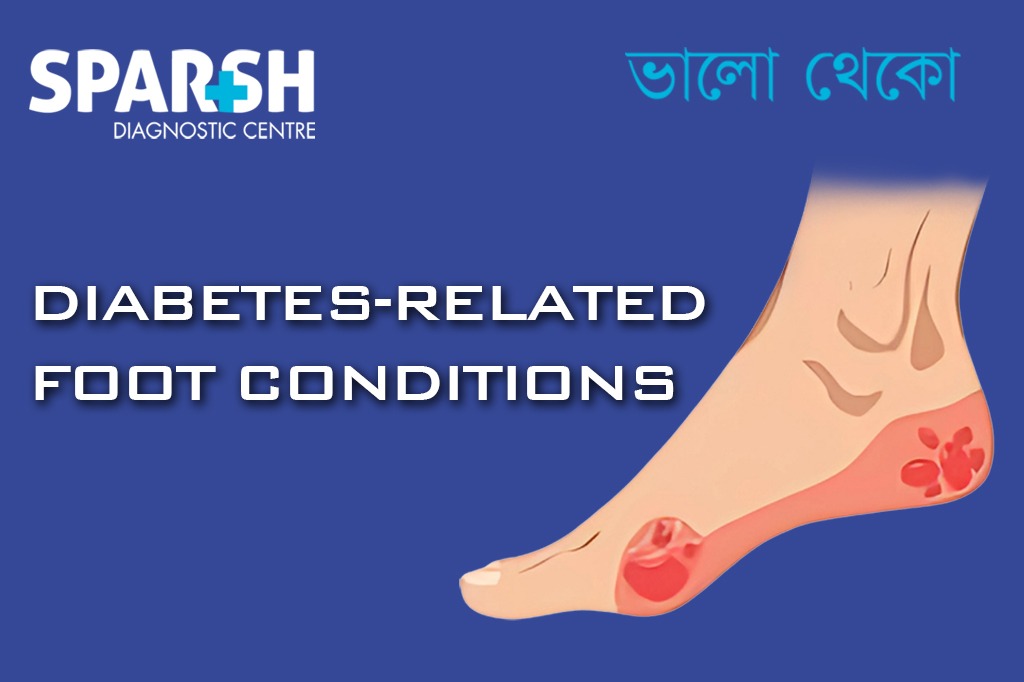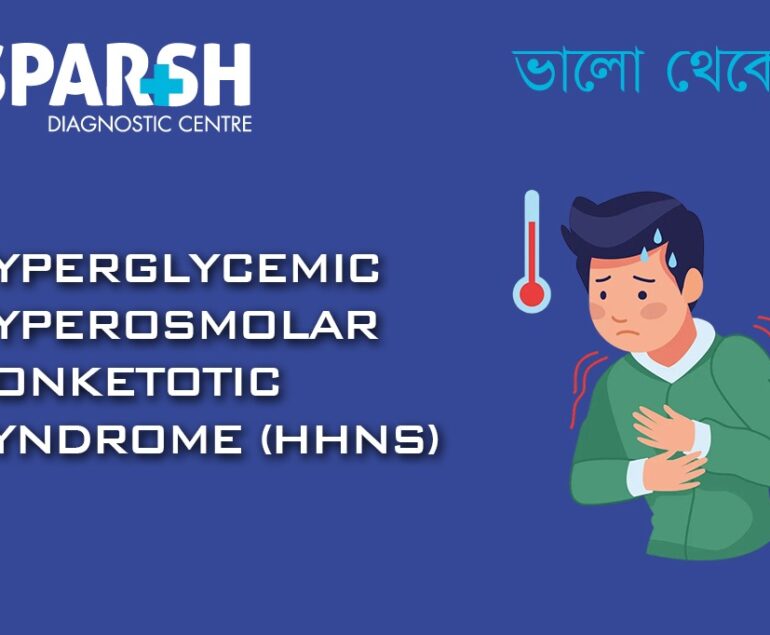Diabetes is a chronic condition that affects millions globally, and one of its most serious yet often overlooked complications is diabetes-related foot conditions. If left unmanaged, these foot problems can lead to infections, ulcers, gangrene, and even amputation. Early detection and proper foot care are essential in preventing such outcomes.
In this comprehensive guide, we’ll explore:
What causes diabetes-related foot problems
Common symptoms to watch for
Serious complications
Preventative strategies
When to see a doctor
Understanding How Diabetes Affects Your Feet
Diabetes affects the feet in two major ways:
1. Peripheral Neuropathy
High blood sugar levels can damage the nerves, especially in the legs and feet. This condition is known as diabetic peripheral neuropathy, and it leads to loss of sensation, making it difficult to feel injuries, heat, or cold.
2. Poor Circulation (Peripheral Arterial Disease)
Diabetes can also cause blood vessel damage, reducing circulation to the feet. This delays wound healing and increases the risk of infections.
Common Symptoms of Diabetes-Related Foot Conditions
The Sparsh Diagnostic Centre infographic identifies several symptoms that signal foot problems in people with diabetes:
1. Loss of Feeling
Also known as numbness, this occurs due to nerve damage (neuropathy). You might not feel a blister, cut, or sore—making infections more likely.
Why it’s dangerous: Without pain as a warning sign, injuries go unnoticed and untreated.
2. Thick, Yellow Toenails
Fungal infections are common in people with diabetes and can cause discolored, thickened nails.
Complication risk: These infections can spread and lead to further foot damage or infections.
3. Ingrown Toenail
An ingrown toenail curves into the skin, causing redness, swelling, and sometimes pus.
Concern: If left untreated, it can become infected, especially dangerous in those with poor circulation.
4. Tingling, Burning, or Pain
These sensations often point to nerve damage. Patients describe it as “pins and needles” or electric-like pain.
Symptom of: Peripheral neuropathy.
5. A Sore That Won’t Heal
Slow-healing wounds or non-healing ulcers are a red flag. Diabetes impairs healing due to poor circulation and high sugar levels.
Urgency: Such sores can become infected, leading to gangrene and potential amputation.
6. Dry, Cracked Skin
Diabetic neuropathy affects sweat glands, leading to dryness and cracks, particularly on the heels.
Why it matters: Cracked skin allows bacteria to enter, causing infections.

Other Diabetes-Related Foot Conditions
Beyond those listed above, there are other common complications:
1. Foot Ulcers
Open sores usually found on the bottom of the foot. They’re often painless due to neuropathy.
Risk factors: Poorly fitting shoes, dry skin, calluses, trauma.
2. Charcot Foot
A rare but serious condition where the bones in the foot weaken and fracture due to nerve damage.
Symptoms: Swelling, warmth, redness—often mistaken for infection.
3. Gangrene
Tissue death due to infection or lack of blood flow. It’s a medical emergency and often leads to amputation.
Causes Behind Diabetic Foot Complications
Several factors contribute to foot problems in diabetics:
High blood sugar levels: Damage nerves and blood vessels.
Smoking: Reduces circulation.
Poor footwear: Causes pressure points and injuries.
Inadequate foot care: Neglecting hygiene and injury care.
Obesity: Adds pressure to the feet.
Long-term diabetes: Increases the risk with disease duration.
Risk Factors
You’re more likely to develop foot problems if you:
Have had diabetes for a long time
Have poorly controlled blood glucose
Suffer from peripheral neuropathy
Have a history of foot ulcers or amputations
Wear ill-fitting shoes
Smoke or drink alcohol
Don’t inspect your feet regularly
Diagnosis and Tests
Foot complications should be evaluated by a healthcare provider using:
Monofilament test: Checks for loss of sensation.
Vibration or pinprick test: Assesses nerve function.
Foot inspection: Looks for ulcers, deformities, and infections.
Imaging: X-rays or MRIs if bone or deep infection is suspected.
Wound cultures: If infection is present.
Prevention Tips: How to Protect Your Feet
1. Check Your Feet Daily
Look for cuts, blisters, redness, swelling, or nail issues.
2. Wash and Moisturize
Use warm water and dry thoroughly—especially between the toes. Apply moisturizer, but not between toes to prevent fungal growth.
3. Trim Toenails Carefully
Cut straight across and avoid cutting too short. Seek a podiatrist for tough nails.
4. Wear Proper Footwear
Choose shoes with a wide toe box, soft insoles, and good arch support. Avoid walking barefoot.
5. Control Blood Sugar
Tight glucose control slows nerve damage and improves circulation.
6. Avoid Smoking
It impairs blood flow and delays wound healing.
7. Regular Checkups
Visit your healthcare provider or podiatrist at least once a year—or more if you’ve had previous foot problems.
Treatment Options
Treatment depends on the specific condition:
For Fungal Nails or Infections:
Topical antifungals
Oral antifungal medications
For Ulcers:
Debridement (removal of dead tissue)
Wound dressings
Off-loading shoes or casts
Antibiotics if infected
For Charcot Foot:
Immobilization with a cast or boot
Surgery in severe cases
For Ingrown Toenails:
Soaking feet
Lifting the nail or partial removal
Antibiotics if infected
When to See a Doctor
Seek immediate medical help if you notice:
A sore that doesn’t heal
Swelling or redness that worsens
Pus or foul smell from a wound
Sudden pain or change in foot shape
Blackened skin (sign of gangrene)
Don’t wait for pain—remember, neuropathy may prevent you from feeling injuries.
Living Well with Diabetes: Foot Care Routine
Here’s a quick daily checklist for healthy diabetic feet:
✅ Inspect your feet every night
✅ Wash and dry your feet
✅ Moisturize dry areas
✅ Wear clean, dry socks
✅ Choose diabetic-friendly shoes
✅ Never walk barefoot
✅ Check inside shoes before wearing
✅ Avoid heating pads or hot water bottles
✅ Get regular checkups with a foot specialist
Foot problems related to diabetes are serious but preventable. Understanding the early signs—like those illustrated by Sparsh Diagnostic Centre—can save you from painful and costly complications down the line.
Regular foot care, proper blood sugar management, and early medical attention are the keys to avoiding serious outcomes like infection, ulceration, and even amputation.
If you or a loved one has diabetes, prioritize foot health starting today. At the first sign of any issue, visit Sparsh Diagnostic Centre for expert evaluation and care.
Need Help?
Sparsh Diagnostic Centre
📞 9830117733 / 8335049501
🕒 Mon to Sat: 7 AM – 9 PM | Sunday: 7 AM – 3 PM
Take a step towards better foot health—before it’s too late.
#BhaloTheko
Disclaimer:
No content on this site, regardless of date, should ever be used as a substitute for direct medical advice from your doctor or other qualified clinician.

![]()





